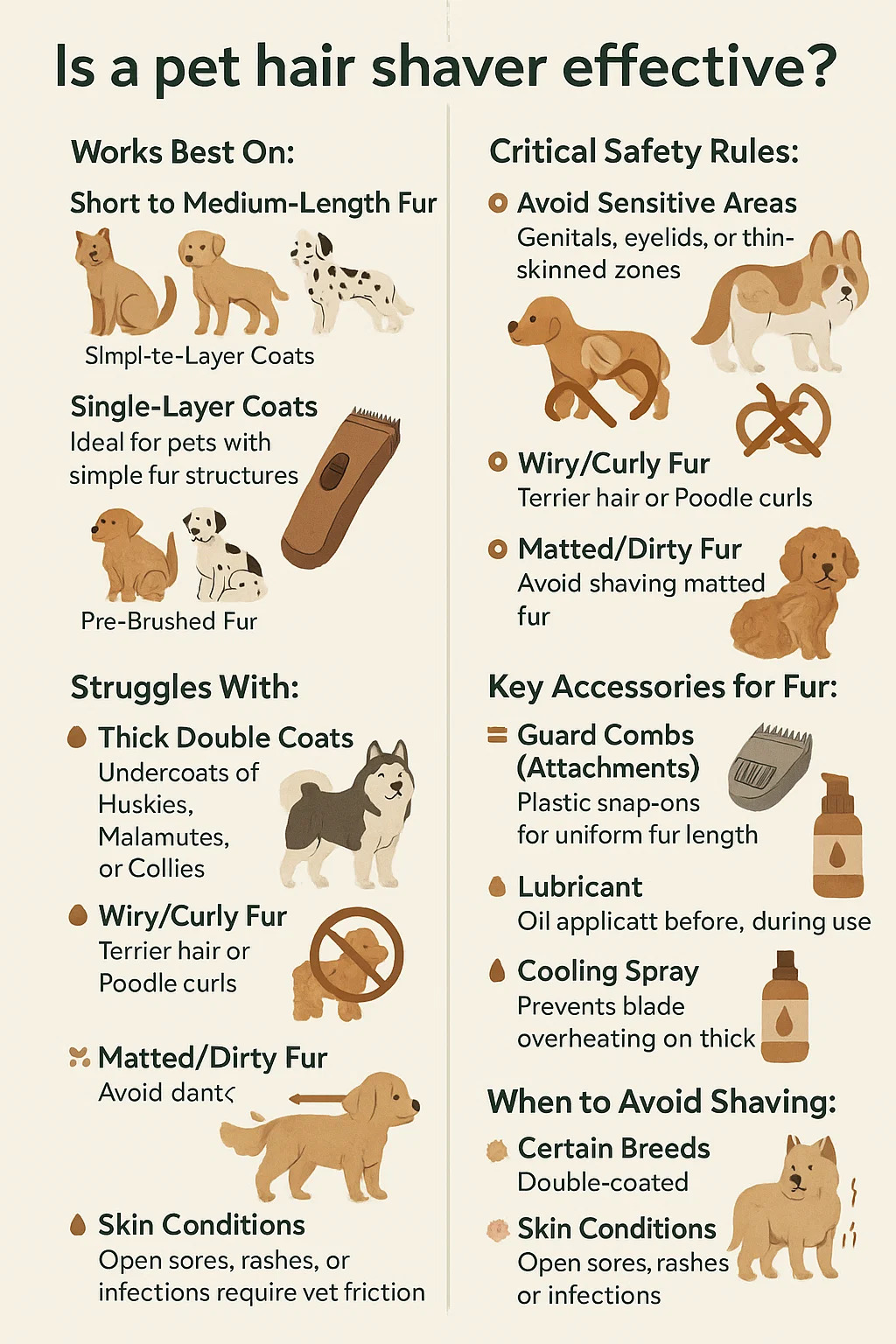Yes, a pet hair shaver (also called pet clippers or trimmers) is specifically designed to work on animal fur, but effectiveness depends on fur type, tool quality, and technique. Below is a detailed breakdown:
1. Works Best On:
Short to Medium-Length Fur: Smoothly trims breeds like Beagles, Labradors, or short-haired cats.
Single-Layer Coats: Ideal for pets with simple fur structures (e.g., Boxers, Dalmatians).
Pre-Brushed Fur: Only effective on tangle-free fur. Mats will jam blades or pull skin painfully.
2. Struggles With:
Thick Double Coats: Undercoats of Huskies, Malamutes, or Collies may require high-power professional clippers. Home shavers can overheat.
Wiry/Curly Fur: Terrier hair or Poodle curls often need specialized blades (e.g., skip-tooth blades) to avoid tugging.
Matted/Dirty Fur: Never shave matted fur – blades can catch skin, causing severe cuts. Always detangle and bathe first.
3. Critical Safety Rules:
Avoid Sensitive Areas: Never use standard shavers near genitals, eyelids, or thin-skinned zones (armpits, groin). Use rounded-tip safety blades.
Check Blade Temperature: Touch blades frequently. Hot blades burn skin instantly. Pause every 5-7 minutes to cool.
Direction Matters: Shave with fur growth direction, not against it, to minimize irritation.
4. Key Accessories for Fur:
Guard Combs (Attachments): Plastic snap-ons for uniform fur length (e.g., 3mm, 6mm). Prevents accidental close shaves.
Lubricant: Apply clipper oil before and during use to reduce friction on dense fur.
Cooling Spray: Prevents blade overheating on thick coats.
5. When to Avoid Shaving:
Certain Breeds: Double-coated breeds (e.g., Pomeranians, Golden Retrievers) rely on fur for temperature regulation. Shaving can cause permanent coat damage.
Skin Conditions: Open sores, rashes, or infections require vet guidance – shavers can worsen irritation.
Anxious Pets: Noise/vibration may trigger stress. Use low-noise models or seek professional help.




 简体中文
简体中文











